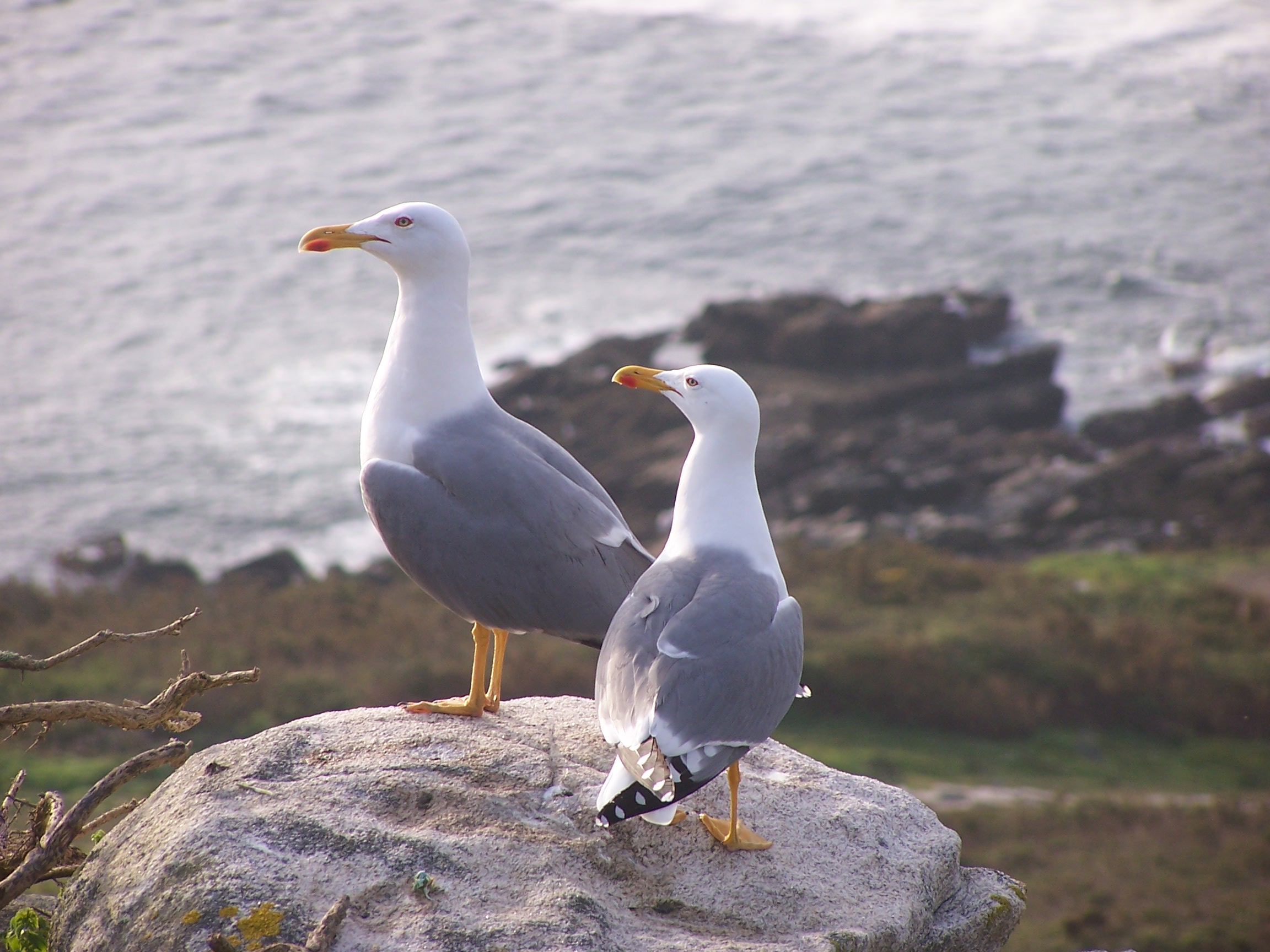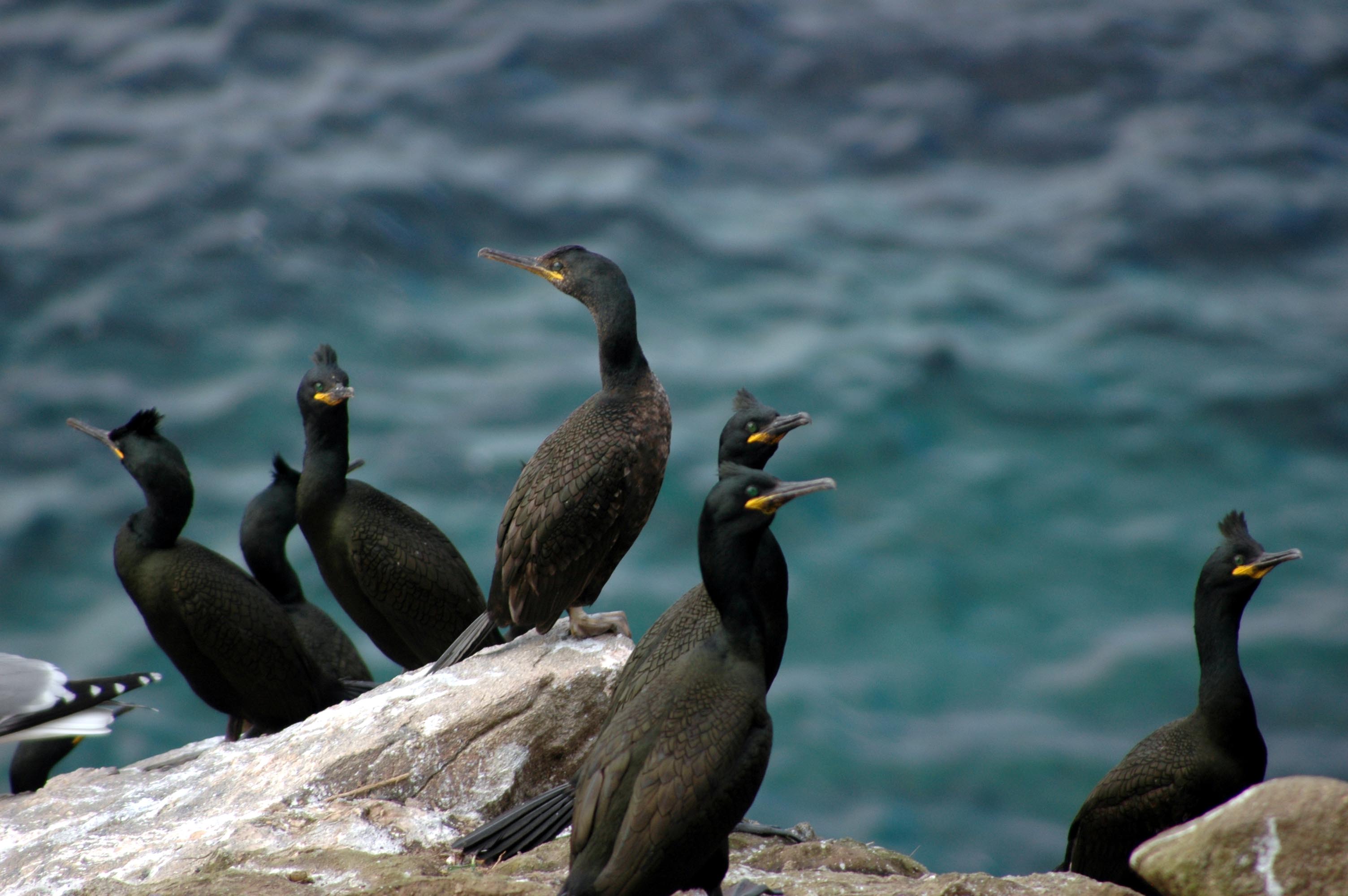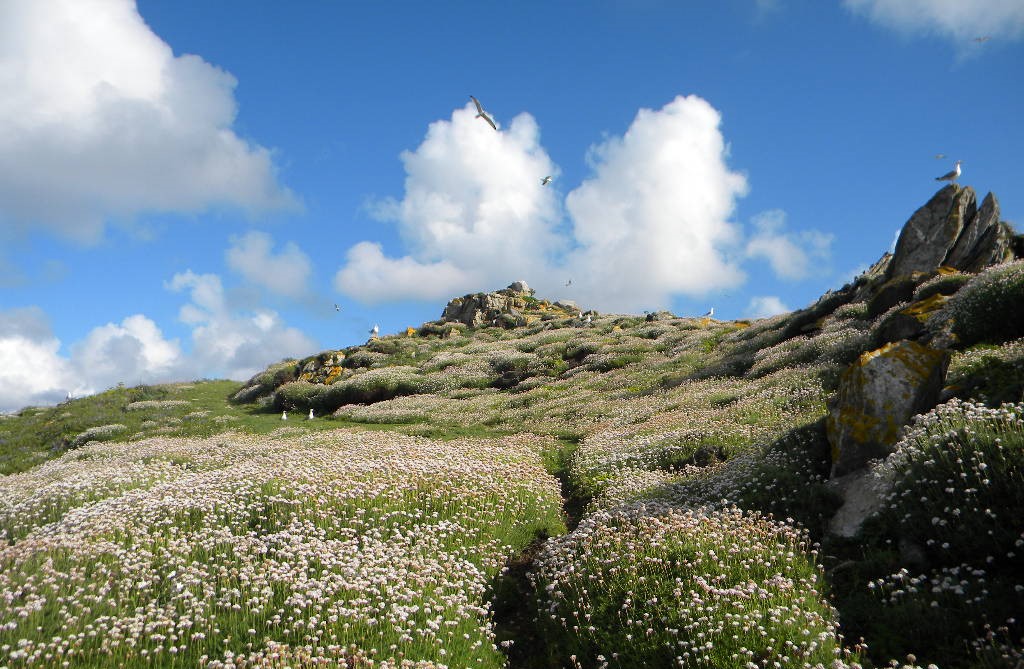STOP 7: ILLOTES FREITOSAS (self-guided route The Names of the Island)
If you prefer, you can download the complete self-guided route leaflet in PDF format HERE. ![]()
The ocean shapes this rocky landscape where only the well-adapted survive.
The fractured rock of the illotes As Freitosas and the surrounding cliffs provides a home for animals and plants capable of surviving in this harsh landscape.
The name Freitosas may have Roman origins and refers to the broken rock that forms the cliffs and islets you see before you (from the Latin verb frangere, “to break,” the islets would have been called fractosas, “broken,” eventually evolving into Freitosas – Cabeza Quiles, Aunios 12, 2007).
The entire western face of the islands is exposed to the open ocean. Waves and salt-laden winds continually erode the coastline, especially in areas of weakness such as the vertical fractures common in the granite rocks of these cliffs. This process creates a dramatic landscape of rocks fractured and battered by the sea, where plants like herba de namorar (sea thrift) and animals like the European shag (Phalacrocorax aristotelis) find their home.
Plants and animals must adapt to survive on these cliffs, where the ocean dictates the conditions for life. If you look closely at the vegetation, you'll see how it grows increasingly close to the ground as it nears the sea, taking on rounded forms that help it resist strong winds.
Among this vegetation, yellow-legged gulls (Larus michahellis)—the most abundant seabird species in the National Park—build their nests. In the steeper, less accessible parts of the cliff, European shags, skilled divers that feed in these rich waters, nest in secrecy. You might spot them perched on rocks near the water or flying low along the waves.




